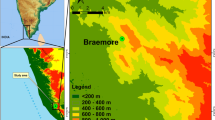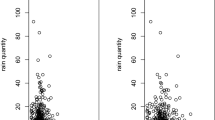Abstract
FOR a study of the hydrion concentration of rain water New Milton appears to offer certain advantages. It is a small town equidistant between the Channel and the New Forest, about ten miles east of Bournemouth and seventeen miles south-west of Southampton, and it has the reputation of enjoying particularly pure and fresh air. For the past year and a half the hydrion concentration (pH) of the rain has been recorded together with the general direction of the wind, these observations having been made with the view to their possible value as part of the general problem of the influence of meteorological conditions upon plant diseases.
This is a preview of subscription content, access via your institution
Access options
Subscribe to this journal
Receive 51 print issues and online access
$199.00 per year
only $3.90 per issue
Buy this article
- Purchase on Springer Link
- Instant access to full article PDF
Prices may be subject to local taxes which are calculated during checkout
Similar content being viewed by others
Author information
Authors and Affiliations
Rights and permissions
About this article
Cite this article
POTTER, M. Hydrion Concentration of Rain and Potable Water. Nature 126, 434–435 (1930). https://doi.org/10.1038/126434c0
Issue Date:
DOI: https://doi.org/10.1038/126434c0
Comments
By submitting a comment you agree to abide by our Terms and Community Guidelines. If you find something abusive or that does not comply with our terms or guidelines please flag it as inappropriate.



